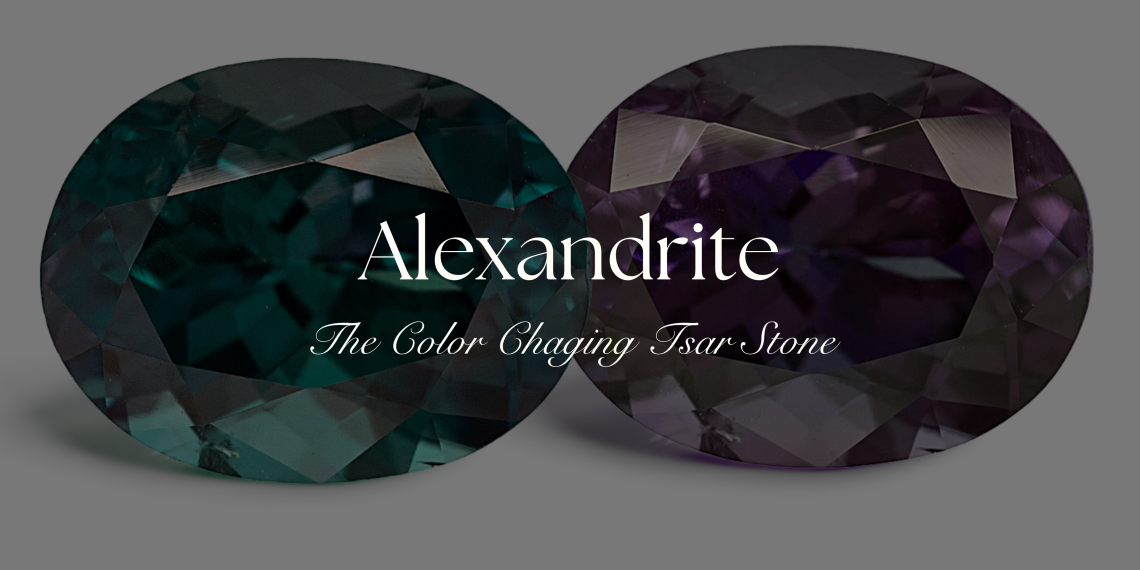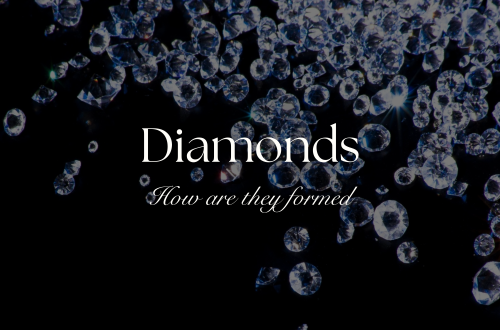Alexandrite is a gemstone like no other. Known for its remarkable color-changing property, often described as “emerald by day, ruby by night,” it is one of the most rare and mysterious gemstones in the world. Its beauty, coupled with its rich history and unique scientific properties, makes Alexandrite a coveted treasure among collectors and gem enthusiasts.
The History of Alexandrite: A Gemstone Fit for Royalty
The Discovery of Alexandrite
The story of Alexandrite began in the Ural Mountains of Russia in the early 1830s. It is said that miners first discovered the gem in 1834, during the reign of Tsar Alexander II. The gemstone was named in his honor, as its discovery coincided with the future tsar’s coming of age.

What set Alexandrite apart from other gemstones was its extraordinary ability to change color under different lighting conditions. By daylight, Alexandrite appeared green, while under incandescent light, it transformed into a reddish hue. This remarkable characteristic was symbolic of Russia’s military colors—green and red—further endearing it to Russian royalty and aristocracy.
Popularity in Imperial Russia
Alexandrite quickly became a favorite among the Russian elite. Its rarity and unique optical properties gave it a mystique unmatched by other gemstones. Jewelry featuring Alexandrite was often gifted among royals and nobility, cementing its reputation as a gemstone of prestige.
However, the Russian mines were eventually depleted, and for many years, Alexandrite remained one of the rarest gemstones in the world. This rarity added to its allure and elevated its value.
The Journey Beyond Russia
New Deposits in Other Countries
After the depletion of Russian deposits, Alexandrite remained scarce until new sources were discovered in the 20th century. Notable deposits were found in:
- Sri Lanka: Producing larger but less intense stones with softer color changes.
- Brazil: Known for producing high-quality Alexandrite with vivid color changes.
- Tanzania and Madagascar: Emerging sources offering Alexandrite with a good balance of size and color change.
Each of these sources brought new varieties of Alexandrite to the market, though none rivaled the legendary quality of the original Russian stones.
The Science Behind Alexandrite
Alexandrite is a variety of the mineral chrysoberyl and owes its unique optical properties to its chemical composition and crystal structure.

Chemical Composition
- Formula: BeAl₂O₄ (beryllium aluminum oxide).
- Trace Elements: The color change is caused by the presence of chromium (Cr³⁺) in the crystal lattice, which absorbs light differently depending on the type of illumination.
Color Change Phenomenon
The color change in Alexandrite is a result of its strong pleochroism and the way chromium ions absorb light. Under natural daylight, which has a higher concentration of blue and green wavelengths, Alexandrite appears green or bluish-green. Under incandescent light, which is rich in red wavelengths, the stone takes on a reddish or purplish hue.
Physical Properties
- Hardness: 8.5 on the Mohs scale, making it durable for jewelry.
- Refractive Index: 1.746–1.755.
- Density: 3.70–3.78 g/cm³.
- Crystal System: Orthorhombic.
Rarity
Natural Alexandrite is extremely rare due to the precise geological conditions required for its formation. The combination of beryllium, aluminum, and chromium in a single deposit is exceptionally uncommon.
Grading Alexandrite: Evaluating Quality
Grading Alexandrite involves assessing several key factors that determine its quality and value. These include color, color change, clarity, cut, and carat weight.
1. Color
The quality of Alexandrite’s color is assessed based on its hue, saturation, and tone. The ideal Alexandrite exhibits a pure green color in daylight and a vivid red or purplish-red color under incandescent light.
- Top Grade: Strong green to strong red.
- Mid Grade: Slightly yellowish-green to reddish-purple.
- Low Grade: Brownish-green or grayish hues with weak color change.
2. Degree of Color Change
The degree of color change is one of Alexandrite’s most prized characteristics. Stones with a 100% color change (from pure green to pure red) are extremely rare and highly valuable. Lesser stones may display partial or muted color changes.
- Excellent: 90–100% color change.
- Good: 70–89% color change.
- Fair: Less than 70% color change.
3. Clarity
Like most gemstones, Alexandrite is graded on clarity, which refers to the presence of inclusions. High-quality Alexandrite should be relatively free of inclusions, although some inclusions are acceptable due to its rarity.
- Eye-Clean: No visible inclusions to the naked eye.
- Slightly Included: Minor inclusions visible under magnification.
- Heavily Included: Inclusions visible to the naked eye, which may affect durability.
4. Cut
Cut quality is critical in showcasing Alexandrite’s unique color change and brilliance. Well-cut stones maximize the color shift and enhance the overall appearance.
- Popular Cuts: Round, oval, cushion, and mixed cuts.
- Challenges: Cutting Alexandrite requires precision to balance its pleochroism and minimize material loss.
5. Carat Weight
Large Alexandrite stones are exceedingly rare. Most Alexandrite gems available on the market weigh less than one carat, and prices increase exponentially with size.
- Common Sizes: 0.5–1 carat for commercial-quality stones.
- Large Stones: Gems over 3 carats with excellent color change are highly prized.
Synthetic and Imitation Alexandrite
Given Alexandrite’s rarity and value, synthetic and imitation stones have become common. While synthetic Alexandrite is created in laboratories and replicates the gemstone’s properties, imitations are typically other materials (e.g., colored glass or synthetic corundum) that mimic Alexandrite’s appearance.
Identifying Synthetic Alexandrite
- Lab-Created Stones: Exhibit the same chemical and optical properties as natural Alexandrite but are grown under controlled conditions.
- Differences: May lack the subtle inclusions found in natural stones.
Imitations
- Common Materials: Color-change sapphire or garnet, glass, and cubic zirconia.
- Testing: Professional gemologists can distinguish natural Alexandrite from imitations using advanced tools.
The Value and Appeal of Alexandrite
Alexandrite’s extraordinary rarity, coupled with its mesmerizing color change and durability, makes it a symbol of luxury and exclusivity. Its association with love and prosperity has made it a popular choice for engagement rings and high-end jewelry.
In the metaphysical world, Alexandrite is believed to bring balance and clarity, enhance intuition, and promote emotional well-being.
Caring for Alexandrite Jewelry
To preserve Alexandrite’s beauty and value, proper care is essential:
- Cleaning: Use a mild soap solution and a soft brush.
- Avoid Harsh Conditions: Keep Alexandrite away from extreme heat or sudden temperature changes.
- Storage: Store separately to avoid scratches from harder gemstones.
A Gemstone of Enchantment and Legacy
Alexandrite is not just a gemstone—it is a marvel of nature that combines scientific intrigue with timeless allure. Its rich history, unique optical properties, and enduring appeal make it a gem of unparalleled beauty and significance.
Whether you are a collector, a jewelry enthusiast, or someone drawn to the mystical charm of gemstones, Alexandrite remains a true treasure of the natural world. Its rarity ensures its value will endure, while its color-changing magic continues to captivate hearts and minds across generations.





